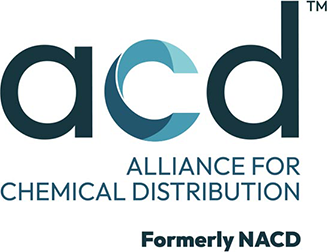It’s no surprise that safety and regulatory compliance are of utmost importance when storing and transporting hazardous liquids, specialty chemicals, and other raw materials in metal, plastic, or composite intermediate bulk containers. To ensure UN and DOT compliance, conducting regular inspections and IBC recertification is the surefire way to eliminate any disruption to your operations. Here’s what you need to know about tank recertification.
Understanding the Need for Recertification
IBC tanks are subject to wear and tear, contamination, and damage from transport and environmental exposure. Recertification ensures these containers remain in working condition and comply with safety standards. The process involves a thorough inspection and retest of the tank’s structural integrity for leaks, corrosion, and more. If defects are identified, the IBC can be rendered unsafe for transportation—requiring removal from service until repaired to its original design type—potentially resulting in downtime within your operations.
IBC Testing and Inspection Requirements
Depending on the tank type and whether it has stored hazardous or non-hazardous chemicals, recertification is typically necessary every 2.5–5 years. In accordance with 49 CFR § 180.352, stationary IBCs must be recertified every 2.5 years, and transport IBCs every 2.5 and 5 years. Metal IBCs must also be inspected for minimum wall thickness, meeting § 178.705(c)(1)(iv) requirements.
Who Can Perform Recertification?
Professionals trained and certified in IBC testing and maintenance must conduct recertifications. Choose a recertification service provider that adheres to the International Maritime Dangerous Goods (IMDG) code and other safety standards relevant to your respective industry. Certified industrial tank service centers, such as Hoover CS owned and operated facilities, have the expertise to ensure your IBC totes meet legal requirements and are safe for reuse.
The Recertification Process
Before an IBC can be recertified, its interior and exterior must be thoroughly cleaned and washed, ensuring the tank is free of residues, vapors, and odors. Once the cleaning process is complete, a tank technician performs a visual inspection to identify structural damage, such as cracks, warpage, rust, or pitting. Then, the tank undergoes internal pressure tests and thickness measurements, if applicable. Technicians will also check valves, fittings, gaskets, and seals for proper functioning, replacing broken parts and completing necessary repairs such as welding. As a final step, any missing, hard-to-read, or damaged markings and decals will be replaced, and the retest date will be marked on/near the IBC’s data plate.
Regular Inspections and Maintenance
Having your IBC tanks regularly inspected and tested is key to extending the lifespan of your reusable containers and can also help to identify potential issues before they worsen or cause safety hazards. Whether you have hundreds of 550-gallon tote tanks in your fleet or only a handful of poly totes needing recertification, your service provider will guide you through the process and make recommendations for ongoing maintenance and service work that may be required. With a clear understanding of the IBC recertification process and requirements and the importance of regular inspections and tank maintenance, you can take proactive steps to ensure compliance and safety in your chemical storage and transport operations.



